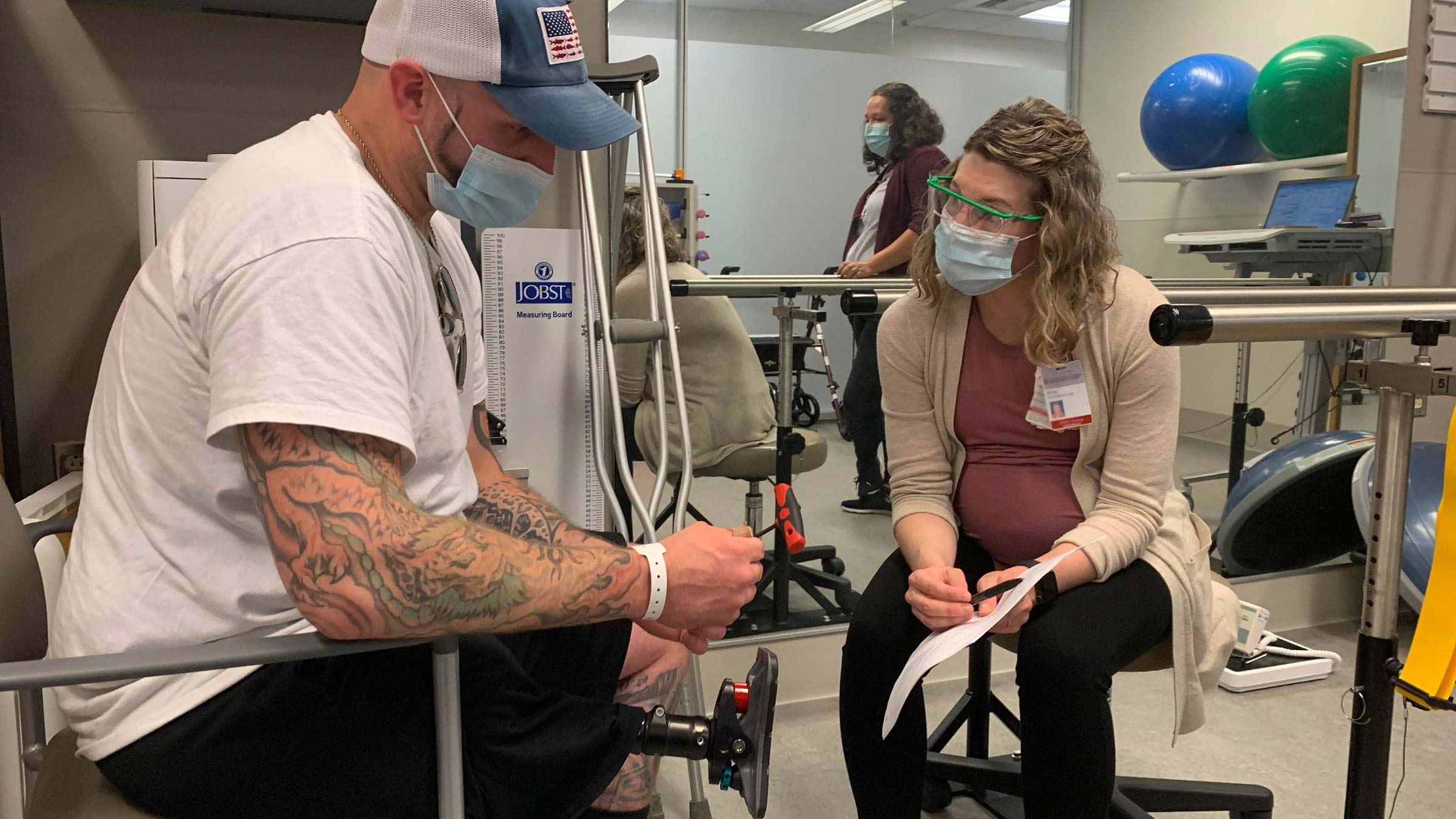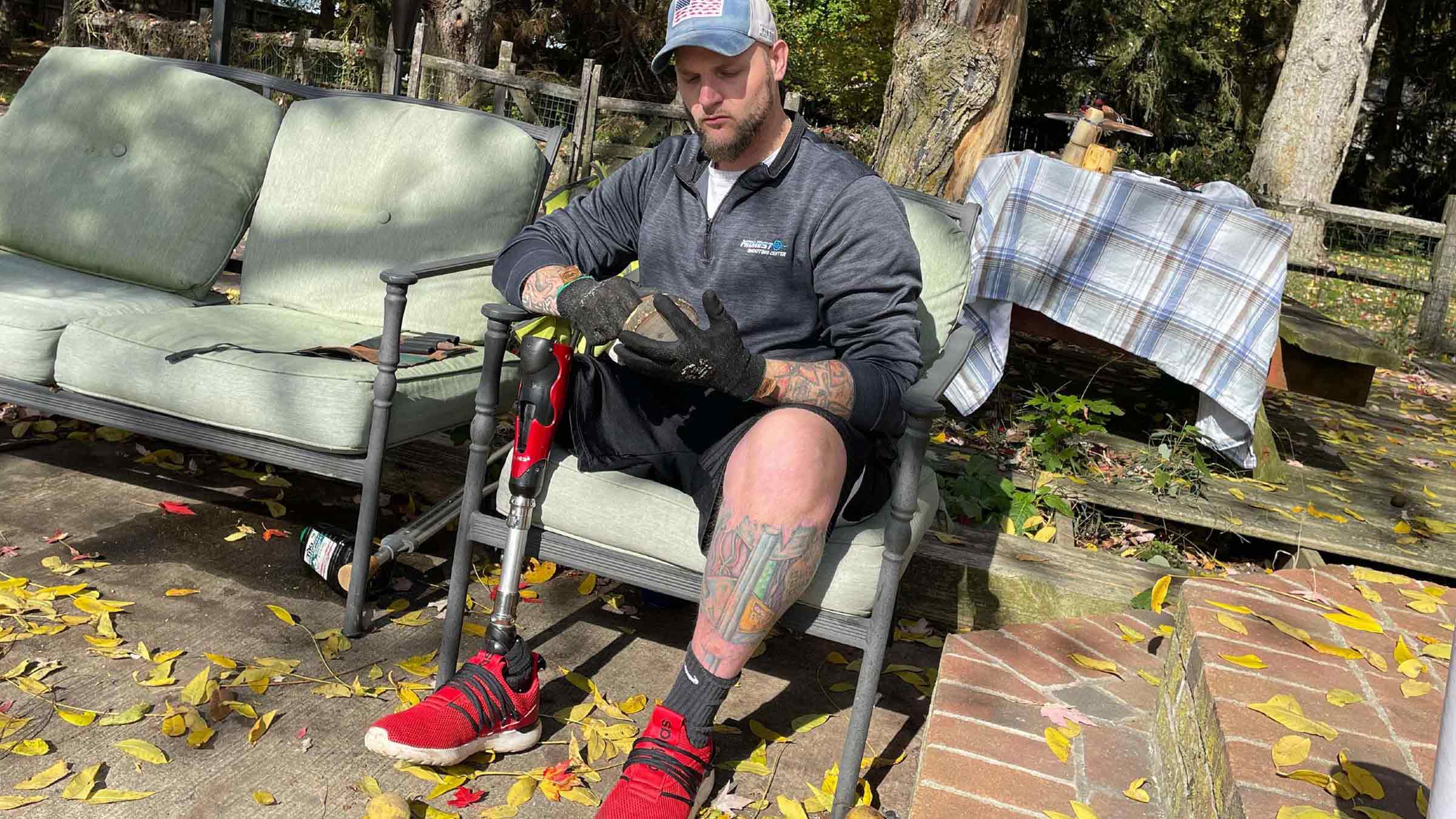
Imagine experiencing a sudden injury or an illness that forces doctors to amputate your leg or arm, forcing you to not only live without the use of this limb but to learn how to use a prosthetic that causes bouts of debilitating pain or tissue damage.
How do you restore and maintain quality of life?
Enter The Ohio State University Comprehensive Cancer Center – James Cancer Hospital and Solove Research Institute (OSUCCC – James) and the Ohio State Wexner Medical Center, where a multidisciplinary team is reimagining prosthetic devices to improve comfort and functionality while also creating a sort of “Luke Skywalker effect” that restores a fluidity of natural movement previously not possible.
The Ohio State team is among the first in the nation to offer a pioneering approach called osseointegration — and the procedure is changing the lives of people who have experienced amputations as the result of armed forces injuries, traumatic accidents, and cancer or other diseases.
“Osseointegration allows the artificial limb to function more naturally and takes pressure off the residual limb, preventing painful issues associated with socket prosthetics, such as friction, blistering, tissue degradation and skin problems,” explains Joel Mayerson, MD, an oncologic orthopedic surgeon and director of perioperative services at the OSUCCC – James.
Mayerson and his colleagues recently performed Ohio State’s first osseointegration procedure on Broc Potts, 31, who lost his leg to complications from osteosarcoma, a rare form of bone cancer, when he was 12 years old.
Broc is the epitome of the phrase “tough as nails.” Determined and tenacious, he has completed several savage races and a warrior run, and he regularly chops wood on his property — doing all of this despite having a prosthetic leg. Although he doesn’t allow his prosthetic limb to keep him from embracing a full life, it has limited his ability to be as active as he’d like to be.
When pain and chronic sores caused by Broc’s traditional socket-and-ball prosthetic limb became so severe that they sidelined him from both his active lifestyle and his work, he turned to Mayerson for solutions.
“The blisters got so bad,” Broc says. “There were many times I would just have to grind my teeth and plow through the pain. This new leg is programmed to walk for me on low, medium and high speeds. I look forward to actually enjoying a visit to the zoo with my family and places that require long walks without worrying that I'm going to be in pain or fall.”
By making prosthetics more comfortable and easier to put on and take off, osseointegration unlocks the benefits of other advanced amputation techniques, such as Targeted Muscle Reinnervation (TMR), which uses nerve surgery in the residual limb to enable more natural movement of the prosthetic and has been found to significantly reduce post-amputation pain.
“This re-imagined approach to prosthetic devices can also significantly reduce chronic pain experienced by people with amputations because it prepares the residual limb to interact with electrodes that allow patients to control their artificial limb with their brain,” Mayerson says. “We're creating sort of the ‘Luke Skywalker effect’ from ‘Star Wars’ by using the brain to move a body part the way it normally would move. And ultimately TMR results in more fluid, intuitive movement of the prosthesis because the nerve is firing in this similar way to a natural limb.”

Comprehensive oncoplastic and prosthetics approach
In the fall of 2021, the Ohio State Wexner Medical Center launched the Military Medicine Program, recruiting Navy surgeon Jason Souza, MD, from Walter Reed National Military Medical Center in Bethesda, Maryland, to serve as director of the effort and director of the Orthoplastic Reconstruction Program. As part of this role, he is leading efforts to develop a comprehensive and integrated model for prosthetic care for patients experiencing amputations, including patients with cancer.
“There are tremendous overlaps between cancer and combat care. A huge part of both models is survivorship and dealing with issues related to reconstruction long-term. We have an incredible opportunity to translate learnings from the military to the oncologic reconstruction space,” Souza says.
A part of the overall Ohio State Military Medicine program, the Advanced Amputation program draws upon existing strengths of the OSUCCC – James plastic and orthopedic oncology surgery teams, integrating research-based technologies — like TMR — to benefit patients with cancer who have experienced loss of a limb or need complex reconstruction.

Accurate, early cancer diagnosis matters
The James Cancer Diagnostic Center gives patients direct, expedited access to diagnostic testing and consultation with Ohio State cancer experts.
Schedule an appointment today
The Ohio State Military Medicine Program is changing lives for military service members
Want to learn more about initiatives in the Ohio State Military Medicine Program?
Learn More





